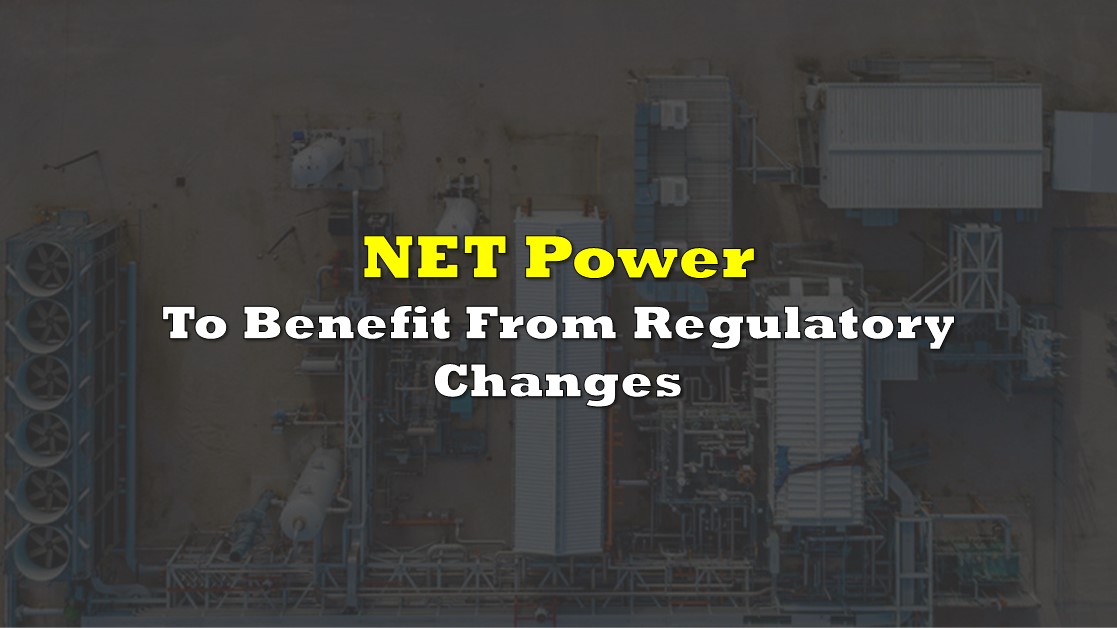Earlier this month, NET Power Inc. (NYSE: NPWR) reported its 2Q 2023 financial results, its first earnings results as a standalone public company. NET Power has developed a revolutionary, patented oxygen combustion power generation technology that produces low-cost electricity, sequesters valuable carbon dioxide (CO2), and emits no CO2, SOx or NOx into the atmosphere. The company is now in the final stages of commercializing this engineering feat.
On June 8, NET Power completed a business combination with its SPAC parent, Rice Acquisition Corp. II; the resultant company was named NET Power. The companies announced the SPAC transaction in mid-December 2022.
During the SPAC process, NET Power raised US$670 million in PIPE (private investment in public equity) investments, much of which was from extremely well-known strategic energy investors like Occidental Petroleum Corporation (NYSE: OXY). Consequently, Net Power’s cash balance was US$649 million as of June 30, 2023.

NET Power believes the PIPE amount raised will fully fund its corporate expenses into 2027 and its equity contribution to the construction of its first utility-scale, 300-megawatt (MW) generation plant called Project Permian, which is expected to become operational sometime in 2026. The total construction cost of Project Permian is estimated to be US$950 million. NET Power has applied for a Department of Energy (DOE) grant program which could potentially fund up to US$270 million of the projects construction costs. A decision on the grant is possible around year-end 2023.
NET Power’s G&A expenses are running at an annualized rate of about US$25 million. However, the interest on the company’s cash balance, at currently elevated short-term interest rates, approximately cover those expenses. After all, a US$600 million cash balance invested at 4% short-term rates generates US$24 million in interest income.
A boost from regulatory changes
The Environmental Protection Agency’s May 2023 proposed rule to drastically reduce power plant emissions is quite constructive for NET Power. A key element of the proposal is a requirement that existing coal-fired plants install expensive pollution-capturing equipment that cuts essentially 90% of CO2 emissions by 2030. If the proposed rule becomes final, many power plant owners will likely to be forced to retire substantial baseload capacity by that date for economic reasons.
Indeed, the PJM Regional Transmission Organization, which coordinates the movement of wholesale electricity in all or parts of 13 states plus Washington D.C., recently estimated that 40 gigawatts (GW) of baseload capacity in its region faces that fate by 2030, and only 4 GW are currently in queue as replacements. A significant portion of that gap could be filled by environmentally friendly NET Power plants.
Another key to the NET Power story is the 45-Q tax credits which each U.S. plant will receive based on the company’s technology. A 300-MW NET Power facility is expected to capture about 800,000 tons of CO2 per year. According to the Inflation Reduction Act passed a year ago, the plant’s owner will receive US$85 for each sequestered ton for twelve years if at least 5% of the cost of the plant is incurred by December 31, 2032. So, a plant owner will receive US$70 million in federal tax credits annually for twelve years, equivalent to a present value of around US$500 million.
NET Power believes there could be an opportunity to build as many as 1,000 facilities in the U.S. alone. The best locations would of course be where the competing cost of power is highest. NET Power’s biggest investor, Occidental Petroleum, may eventually have the need for as many as thirty of these facilities to support its direct air capture (DAC) business.
NET Power Inc. last traded at $15.49 on the NYSE.
Information for this story was found via the sources and companies mentioned. The author has no securities or affiliations related to the organizations discussed. Not a recommendation to buy or sell. Always do additional research and consult a professional before purchasing a security. The author holds no licenses.




